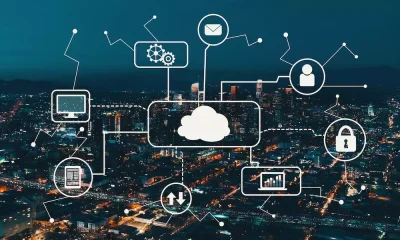Security
How Are Businesses Fighting Cyber Hackers?

How do businesses deal with cyber hackers, and what are the solutions to fighting them?
Since the dawn of the internet, the opportunities that the digital age offers businesses have grown exponentially. The internet enables all manner of organizations to communicate, build a reputation, foster good relationships, and sell their products more easily online.
However, there is one big fly in the ointment with the increased reliance on digital communications, data collection, and online transactions, and it’s the increased risk of cyberattacks and cyberhacking. Not all cyberattacks come from ‘hacking’ some also come from ‘phishing,’ i.e. fake emails.
Data Security Breaches
Cybersecurity issues have been increasing at a rate of around 33% per year. It is an ever-present threat that IT teams battle against daily. Nobody is immune to the increasingly sophisticated methods criminals use to gain access to a company’s or individual’s private information. From Target to Equifax, many high-profile organizations’ data security breaches have been reported in the media. Protection is critical, and there are several things businesses can do to avoid falling prey.
Cybersecurity Is A Growth Industry
Due to the increase in hackers, cybersecurity is a rapid growth industry, with many large organizations relying heavily on technology support services just to enable them to function. Without this protection, large organizations such as banks, retailers, and financial service providers would not be able to carry out transactions for customers or provide services such as online banking.
Cybersecurity has now become such big business that investors’ interest in cybersecurity stocks is increasing.
According to IBM president, Ginni Rometti, cybercrime is now the biggest threat to all companies globally, with the worldwide cost of it now reaching around $2 trillion.
Despite the growth in the cybersecurity market, hacking rates are still increasing, and they are also using more sophisticated means of accessing personal information without being detected. Previously, individuals would find their computers crashed, which would alert them to a hack.
Today hackers can send a Trojan virus to a computer via a website link, which once clicked on can lurk in the background, waiting for a chance to gather bank account details and other personal information that could enable them to raid people’s accounts.
White Hat & Black Hat
The good guys, the ‘white hat’ hackers, who work to protect organizations, have unfortunately not been able to keep up the pace with the ‘black hat’ hackers, who use their hacking skills to commit crimes for financial gain – they are essentially online burglars. It seems despite the growth of cybersecurity protection, we are currently losing the battle against criminals. This can only mean the cybersecurity market will continue to grow and redouble its efforts to beat criminals.
Workplace Culture Around Cybersecurity
Creating a workplace culture of cybersecurity awareness is also essential, as employees can help defend the organisation, but only if they are aware of the issues that can be combatted by them.
With knowledge of data security fundamentals and how to spot cybercrime, your workforce can provide an additional ‘human firewall’. Your business can take action when your staff spots the risks, and escalating problems to IT management, rather than inadvertently allowing malicious emails to spread computer viruses throughout the organization.
Firewall & Anti-virus Software
Having a firewall in place to filter out malicious emails and attempts to spread viruses is only part of the battle. Website filtering is also necessary, not only to protect colleagues from accessing questionable sites but also to prevent threats to the network. Anti-virus software and malware are also critical barriers to stopping the spread of malicious viruses and protecting companies from data breaches. Network access control is also a factor, enabling businesses to ensure only authorized devices gain access to the network.
Smaller organizations are also at risk, and yet are less likely to be prepared in the event of an attack, or have a cybersecurity plan in place. Many operate under a false sense of security, believing only larger organizations get hacked.
Technology Fighting Cybercrime
Fourth and fourth industrial revolution technology has upped the ante on fighting cybercrime. For example, machine learning is making great inroads in large enterprises, search engines like Google, and governments, to detect malware threats and protect data against threats in real-time.
Summary
Fighting cybercrime in all its forms is a cat and mouse game. Arguably the criminals are still ahead as they create new methods to get to breach systems and get to your data. Technology is catching up learning in real-time how to detect breaches and workplaces are changing their culture to do the basics to prevent the obvious hacks.









